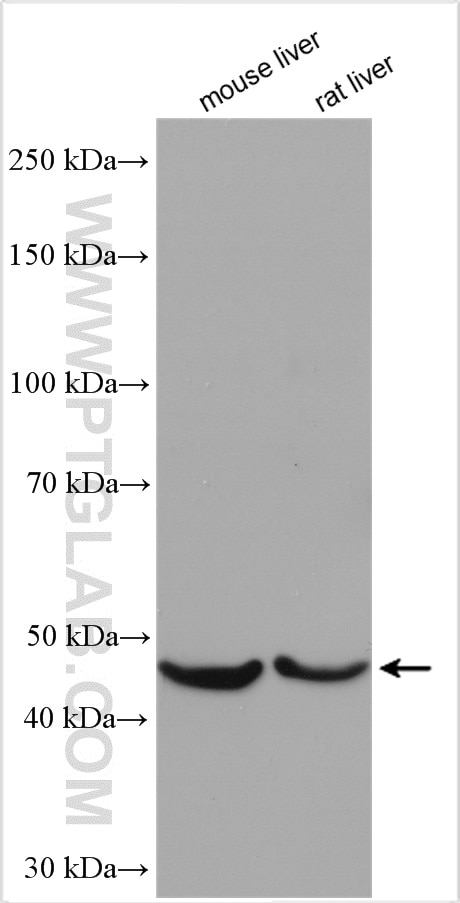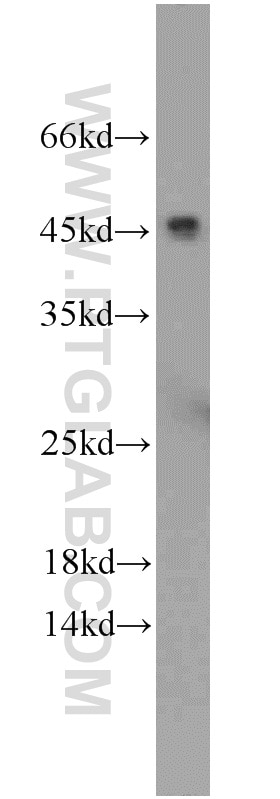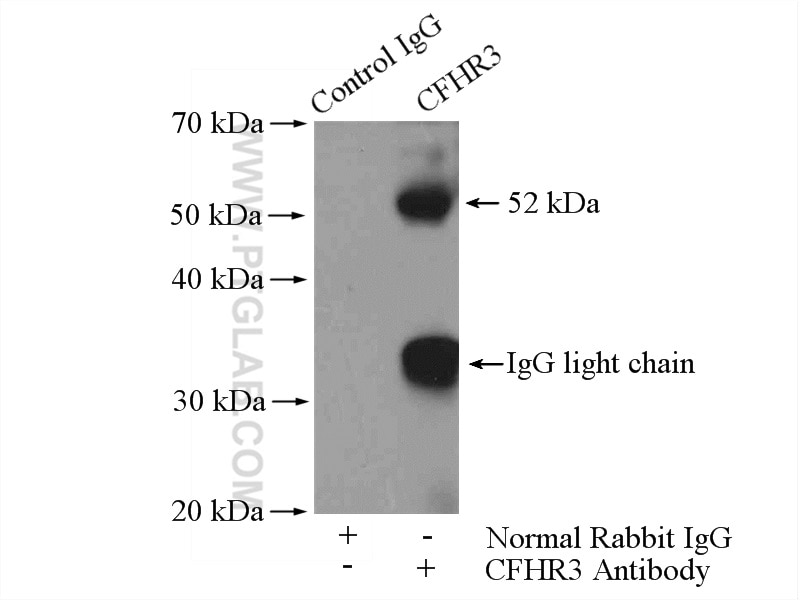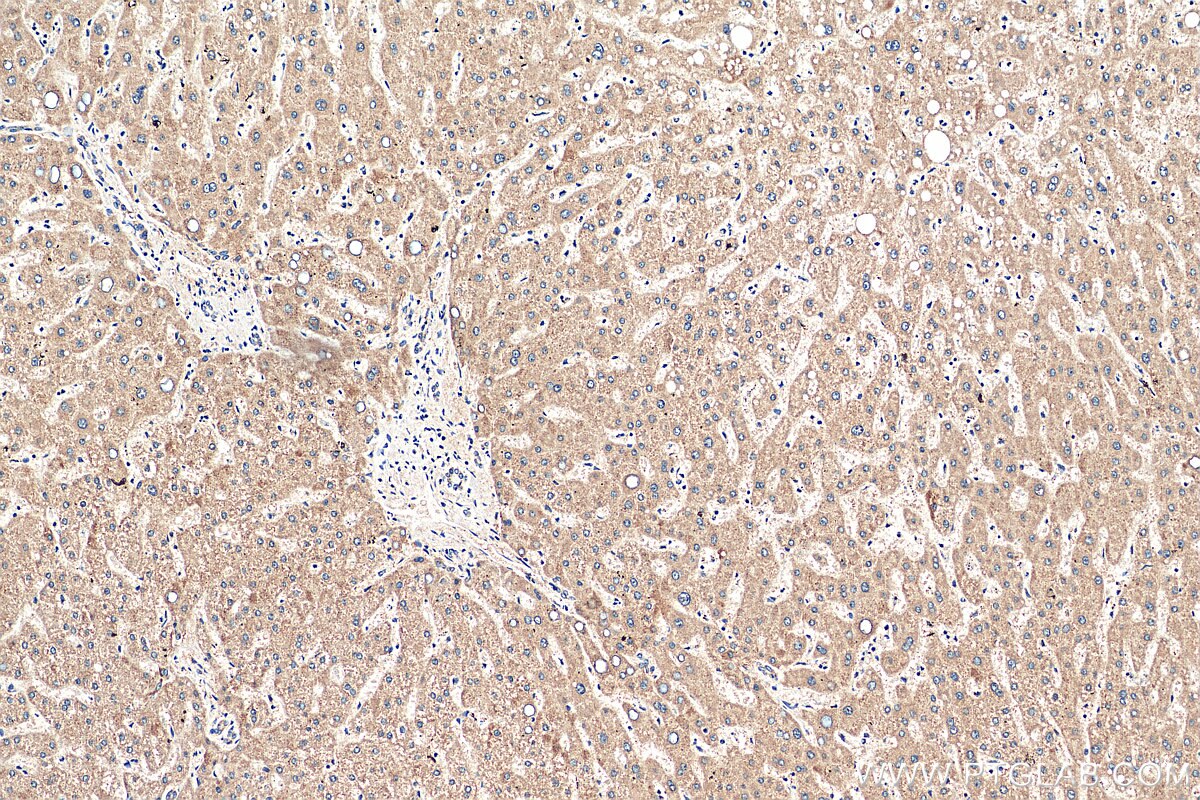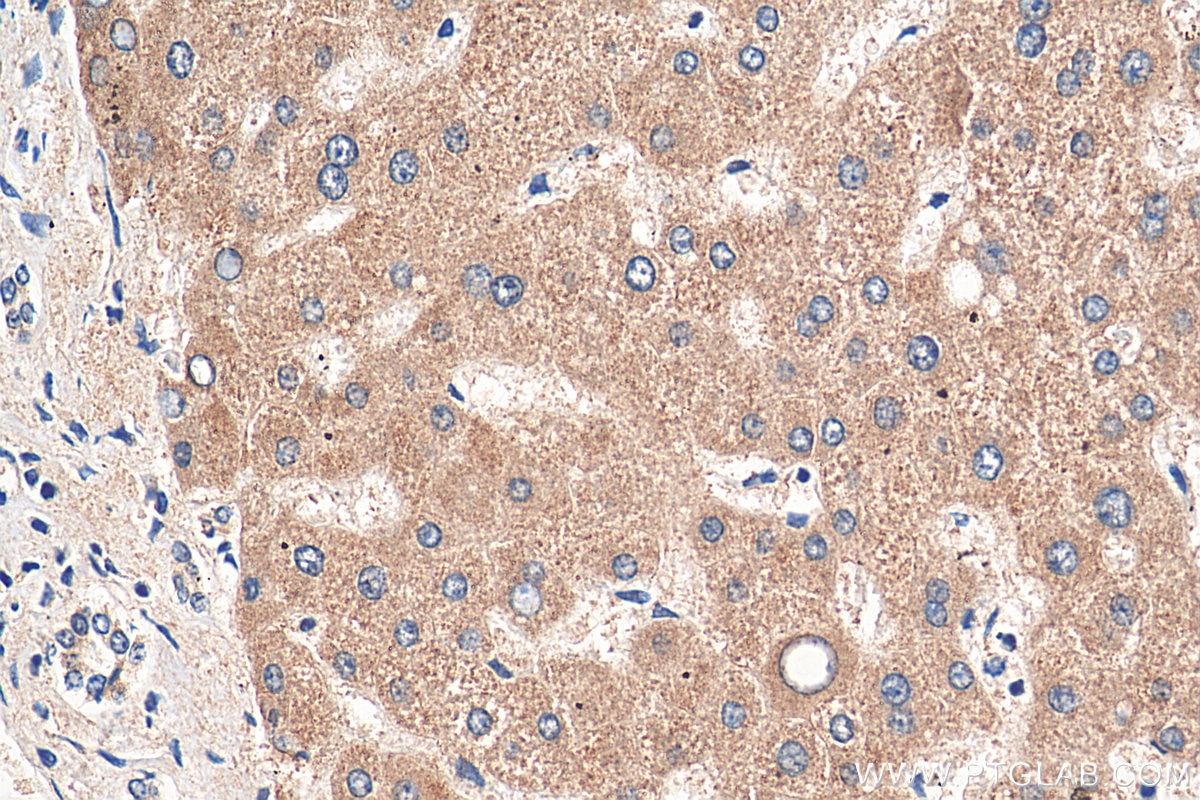Validation Data Gallery
Tested Applications
| Positive WB detected in | mouse liver tissue, human heart tissue, rat liver tissue |
| Positive IP detected in | HepG2 cells |
| Positive IHC detected in | human liver tissue Note: suggested antigen retrieval with TE buffer pH 9.0; (*) Alternatively, antigen retrieval may be performed with citrate buffer pH 6.0 |
Recommended dilution
| Application | Dilution |
|---|---|
| Western Blot (WB) | WB : 1:1000-1:4000 |
| Immunoprecipitation (IP) | IP : 0.5-4.0 ug for 1.0-3.0 mg of total protein lysate |
| Immunohistochemistry (IHC) | IHC : 1:50-1:500 |
| It is recommended that this reagent should be titrated in each testing system to obtain optimal results. | |
| Sample-dependent, Check data in validation data gallery. | |
Published Applications
| KD/KO | See 1 publications below |
| WB | See 6 publications below |
| IHC | See 3 publications below |
| IF | See 1 publications below |
Product Information
16583-1-AP targets CFHR3 in WB, IHC, IF, IP, ELISA applications and shows reactivity with human, mouse, rat samples.
| Tested Reactivity | human, mouse, rat |
| Cited Reactivity | human |
| Host / Isotype | Rabbit / IgG |
| Class | Polyclonal |
| Type | Antibody |
| Immunogen |
CatNo: Ag9963 Product name: Recombinant human CFHR3 protein Source: e coli.-derived, PGEX-4T Tag: GST Domain: 1-330 aa of BC058009 Sequence: MLLLINVILTLWVSCANGQVKPCDFPDIKHGGLFHENMRRPYFPVAVGKYYSYYCDEHFETPSGSYWDYIHCTQNGWSPAVPCLRKCYFPYLENGYNQNYGRKFVQGNSTEVACHPGYGLPKAQTTVTCTEKGWSPTPRCIRVRTCSKSDIEIENGFISESSSIYILNKEIQYKCKPGYATADGNSSGSITCLQNGWSAQPICINSSEKCGPPPPISNGDTTSFLLKVYVPQSRVEYQCQPYYELQGSNYVTCSNGEWSEPPRCIHPCIITEENMNKNNIKLKGRSDRKYYAKTGDTIEFMCKLGYNANTSILSFQAVCREGIVEYPRCE 相同性解析による交差性が予測される生物種 |
| Full Name | complement factor H-related 3 |
| Calculated molecular weight | 330 aa, 37 kDa |
| Observed molecular weight | 45-56 kDa |
| GenBank accession number | BC058009 |
| Gene Symbol | CFHR3 |
| Gene ID (NCBI) | 10878 |
| RRID | AB_2080151 |
| Conjugate | Unconjugated |
| Form | |
| Form | Liquid |
| Purification Method | Antigen affinity purification |
| UNIPROT ID | Q02985 |
| Storage Buffer | PBS with 0.02% sodium azide and 50% glycerol{{ptg:BufferTemp}}7.3 |
| Storage Conditions | Store at -20°C. Stable for one year after shipment. Aliquoting is unnecessary for -20oC storage. |
Background Information
CFHR3, also named as DOWN16, belongs to the complement factor H-related protein family. Expressed by the liver and secreted in plasma, human CFHR3 is composed of five short consensus repeats (SCRs), and it also has a 19-amino acid signal peptide and four N-linked glycosylation sites. It may be involved in complement regulation. Deletion of CFHR1 and CFHR3 genes was found to be associated with decreased risk of age-related macular degeneration (AMD), and with an increased risk of atypical hemolytic-uremic syndrome (aHUS).
Protocols
| Product Specific Protocols | |
|---|---|
| IHC protocol for CFHR3 antibody 16583-1-AP | Download protocol |
| IP protocol for CFHR3 antibody 16583-1-AP | Download protocol |
| WB protocol for CFHR3 antibody 16583-1-AP | Download protocol |
| Standard Protocols | |
|---|---|
| Click here to view our Standard Protocols |
Publications
| Species | Application | Title |
|---|---|---|
Clin Cancer Res Complement regulatory proteins CFHR1 and CFHR3 and patient response to anti-CD20 monoclonal antibody therapy. | ||
Sci Rep A haplotype in CFH family genes confers high risk of rare glomerular nephropathies. | ||
Exp Eye Res Quantitative analysis of hydroxyapatite-binding plasma proteins in genotyped individuals with late-stage age-related macular degeneration. | ||
PLoS One A novel quantitative hemolytic assay coupled with restriction fragment length polymorphisms analysis enabled early diagnosis of atypical hemolytic uremic syndrome and identified unique predisposing mutations in Japan. | ||
Bioengineered A novel hypoxia-driven gene signature that can predict the prognosis of hepatocellular carcinoma. | ||
Mol Med Rep Complement factor H‑related 3 overexpression affects hepatocellular carcinoma proliferation and apoptosis. |

